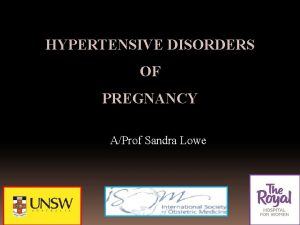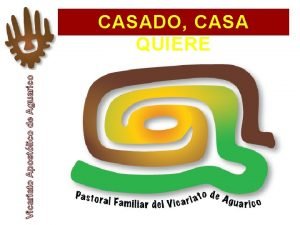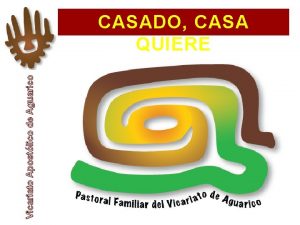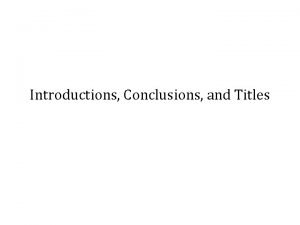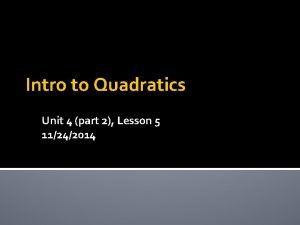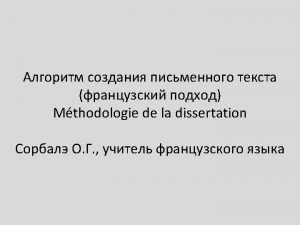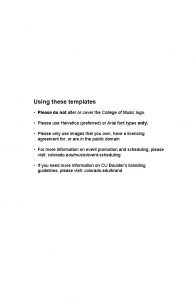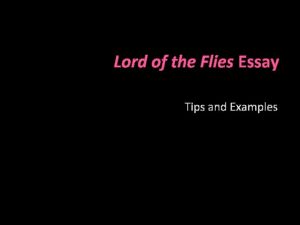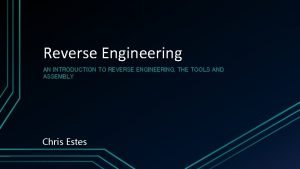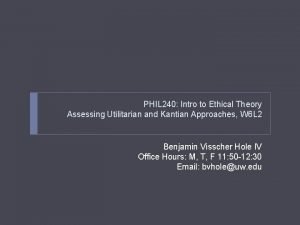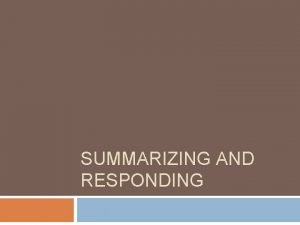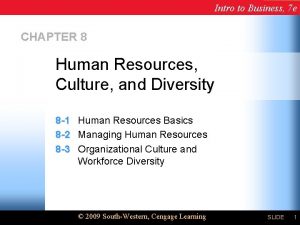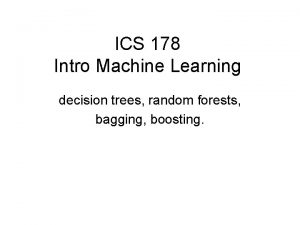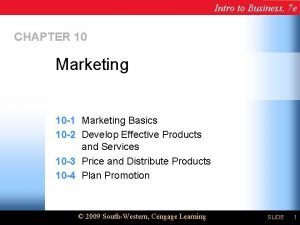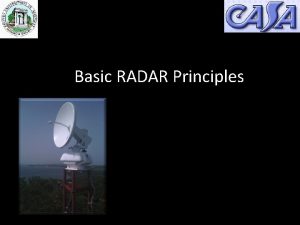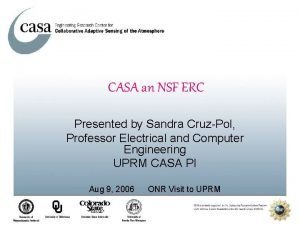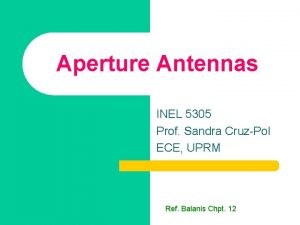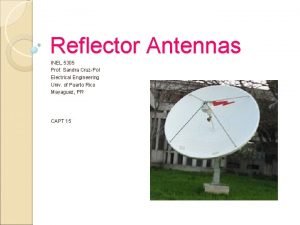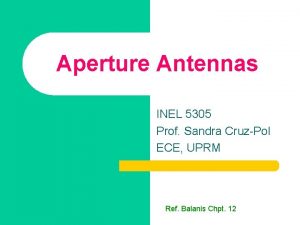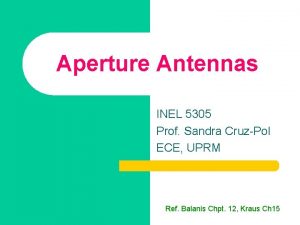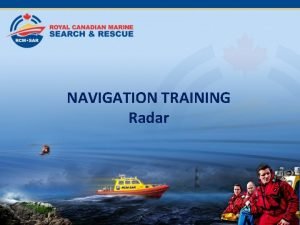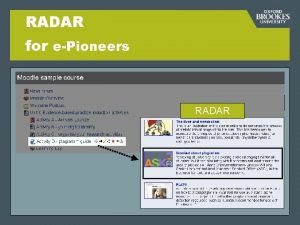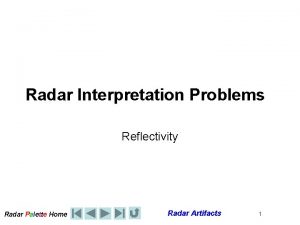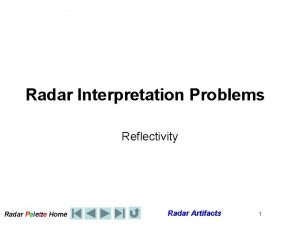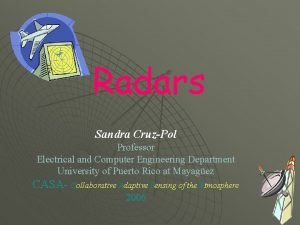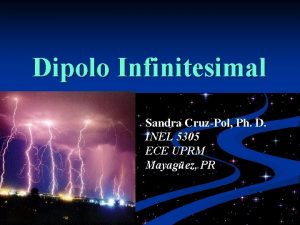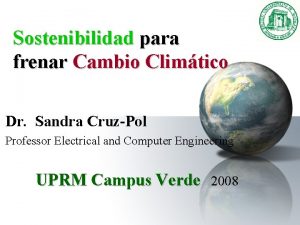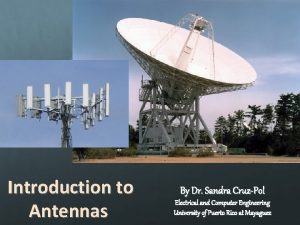CASA RADAR Intro Prof Sandra CruzPol Ph D























![References t The COMET project [http: //www. comet. ucar. edu/] t NASA TRMM t References t The COMET project [http: //www. comet. ucar. edu/] t NASA TRMM t](https://slidetodoc.com/presentation_image/546068a3e772e025c7248b885fa03b8f/image-24.jpg)
- Slides: 24

CASA: RADAR Intro Prof. Sandra Cruz-Pol, Ph. D. Electrical and Computer Engineering UPRM

“There is insufficient knowledge about what is actually happening (or is likely to happen) at the Earth’s surface where people live. ” [NRC 1998]

Observation Limitations Single NEXRAD (TJUA) in PR Distance Cayey to Mayagüez: ~ 100 km Site Elevation: 850 m Curvature Beam Elevation (Above Site): 600 m Total Beam Elevation (Above SL): 1. 4 km NEXRAD Rainfall 1 Hour Total

This System “underneath” NEXRAD Water spout at Mayaguez, PR- Sept 2005

What is a Radar? Radio detection and ranging 1. How does a radar work? 2. Games

Light is an electromagnetic wave. Microwaves = have air wavelengths in the mm – cm scales Their frequencies in the Giga Hertz GH range

Electromagnetic Spectrum


Compare to: Acoustic Echo-location hello

Acoustic Echo-location hello

Acoustic Echo-location hello distance

Hi !! time t = 2 x range / speed of sound Example: range = 150 m Speed of sound ≈ 340 meters/second t = 2 X 150 / 340 ≈ 1 second

RADAR Echolocation (RADAR ~ RAdio Detection And Ranging) “Microwave Echo-Location” Tx Rx Microwave Transmitter Receiver

Target Range Tx Rx time t = 2 x range / speed of light measure t, then determine Range Example: t =. 001 sec Speed of light = c = 3 x 108 meters/second Range =. 001 x 3 x 108 / 2 = 150, 000 m = 150 km

We will see that Radars work by… Transmitting microwave pulses…. and measuring the … • Time delay (range) • Amplitude • Frequency • Polarization … of the microwave echo in each range gate

Polarization • Describes the way the electric field of the wave moves through space as seen from behing along time. ,

Doppler Effect

Target Radial Velocity Frequency ft Frequency f t+ f d

Target Radial Velocity Frequency ft Frequency f t+ f d

Zero Velocity for “Crossing Targets” Frequency ft Doppler Frequency f t+ f d

QPE – Quantitative Precipitation Estimation 0. 1 mm/hr 15 mm/hr 100 mm/hr >150 mm/hr

Play the games to learn the basics • http: //whyfiles. org • • • http: //meted. ucar. edu/hurrican/strike/index. htm http: //meted. ucar. edu/hurrican/strike/info_3. htm# http: //www. nws. noaa. gov/om/hurricane/index. shtml http: //www. nws. noaa. gov/om/edures. htm

More Games for Kids 4 -104 http: //www. nws. noaa. gov/om/reachout/kidspage. shtml
![References t The COMET project http www comet ucar edu t NASA TRMM t References t The COMET project [http: //www. comet. ucar. edu/] t NASA TRMM t](https://slidetodoc.com/presentation_image/546068a3e772e025c7248b885fa03b8f/image-24.jpg)
References t The COMET project [http: //www. comet. ucar. edu/] t NASA TRMM t NCAR (National Center for Atmospheric Research) University Corporation for Atmospheric Research (UCAR) t NOAA Educational Page [http: //www. nssl. noaa. gov/edu/ideas/radar. html] t Dave Mc. Laughlin Basics of Radars presentation t NWS [http: //www. crh. noaa. gov/fsd/soo/doppler. htm]
 Pulse doppler radar vs mti
Pulse doppler radar vs mti Mti vs pulse doppler radar
Mti vs pulse doppler radar Superimposed preeclampsia
Superimposed preeclampsia Casados casa quieren
Casados casa quieren Casados casa quieren
Casados casa quieren Titles for introductions
Titles for introductions The image characteristics are ____.
The image characteristics are ____. Unit 1 study guide government
Unit 1 study guide government Intro to polyamory
Intro to polyamory Comment faire une bonne introduction de dissertation
Comment faire une bonne introduction de dissertation Alter intro template
Alter intro template Lord of the flies thesis
Lord of the flies thesis Intro to reverse engineering
Intro to reverse engineering Dr phil intro
Dr phil intro The xx intro live
The xx intro live Body paragraph
Body paragraph Intro section on facebook
Intro section on facebook Introduction body and conclusion
Introduction body and conclusion Intro to ecology
Intro to ecology Intro to business chapter 8
Intro to business chapter 8 Random forest intro
Random forest intro Intro
Intro Makeup intro
Makeup intro Chapter 10 marketing test answers intro to business
Chapter 10 marketing test answers intro to business Vanitas intro
Vanitas intro


